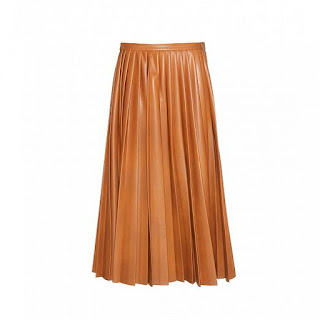Evolution of Jeans & Levi Struss Denim
Today "jeans" refers to a particular
style of pants, called "blue jeans," which were invented by Jacob
Davis in 1871 and patented by
Davis and Levi Strauss on May
20, 1873. Originally designed for cowboys and miners, jeans became popular in
the 1950s among teenagers, especially members of the greaser subculture.
(Terminology Jean- Research on jean fabric shows that it
emerged in the cities of Genoa, Italy,
and Nimes, France. Gênes, the French word for Genoa,
may be the origin of the word "jeans". In Nimes, weavers tried to
reproduce jean but instead developed a similar twill fabric that became known
as denim, from de Nimes, meaning "from
Nimes". Genoa’s jean was a fustian textile of “medium quality and of reasonable cost”, very
similar to cotton corduroy for which Genoa was famous, and was
"used for work clothes in general". Nimes’s “denim” was coarser,
considered higher quality and was used "for over garments such as smocks
or overalls")
But if you will go to the history , jeans were simply
sturdy trousers worn by factory workers, horse riders class, cow boy etc.
similar to this Denim fabric they had
sturdy cotton fabric used for everything from working clothes to fashion items. One more thing was also very famous and that is 'Dungaree', it was referred
to as cheap, coarse thick cotton cloth, often colored blue but sometimes white,
worn by impoverished people in what was then a region of Bombay, India a dockside village called Dongri. Dungri was exported to England and used for manufacturing of cheap, robust working
clothes. English began to call "dungri " cloth a little different and
it became "dungaree"
The term "JEAN" appears first in 1795,
called "bleu de Genes" which later known worldwide as "blue
jeans". (that time it was dyed in indigo, exported from India, later
replaced by the German synthetic technology)
 Initially.
Initially.
By the 1960s, both men's and
women's jeans had the zipper down the front.
Historic photographs indicate that jeans generally fit quite loosely, Until
1960, Levi Strauss called its flagship
product "waist overalls" rather than "jeans". And this name
continued till 1960.
Levi Strauss Co
 |
| Leather patch logo showing patent |
Jacob
Davis was a tailor who often bought bolts
of cloth from the Levi Strauss a young man running
his company Levi Strauss Co. (wholesale house of dry goods
in San Francisco). In 1872, Davis and
Strauss form a partnership to patent and sell clothing, reinforced with rivets. The garment was unique of its type as the way it
has been reinforced, may increased durability. The copper rivets were to reinforce the points
of stress, such as pocket corners and at the bottom of the button fly. The two
men received US patent No. 139,121 for an "Improvement in Fastening
Pocket-Openings" on May 20,1873.
 |
| The classic label for Levi 501 jeans. |
Davis and Strauss experimented with
different fabrics. An early attempt was brown cotton duck , a bottom-weight
fabric. Finding denim a more suitable material for work-pants, they began using
it to manufacture their riveted pants. When they introduced the jeans it was
not called as Jeans or a Denim. It was simply XX , which means( according to
that time industry stander) high quality. That time XX was also the name of
pants’ actual denim, which come from New Hampshire’s company.
In 1918 Levis introduced first women’s
wear garment, and first jeans for women in 1934.
In 1936 Levis introduced
iconic red labe l
Fewer jeans were made during World
War II but Jeans started gaining popularity when James Dean publicized in the movie “Rebel Without a Cause”, wearing jeans
became a symbol of youth rebellion during the 1950s. Because of the
that kind of movie, Jeans were sometimes
banned in theaters, restaurants and schools.
During the 1960s the wearing of
jeans became more acceptable, It was the year when Levis re-transformed and took new avtar .
By the 1970s it had become general fashion in
the United States for casual wear. Within 8 years span Levis introduced Jeans
they had 527 stores in Europe.
Acceptance of jeans continued through
the 1980s and 1990s to the point where jeans are, in the first decade of 21st
century , a wardrobe staple, with the average North American owning seven pairs.
In the 2010s, jeans may be seen worn by people of all
genders and ages. Today across the world Levis has strong presence and customer acceptance.
Reference-
Book- Denim: From Cowboys to Catwalks,
by Paul Trynka
www.wikkipedia.com





































